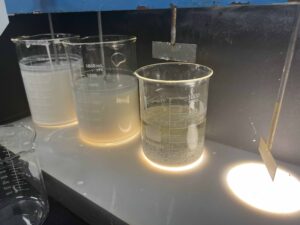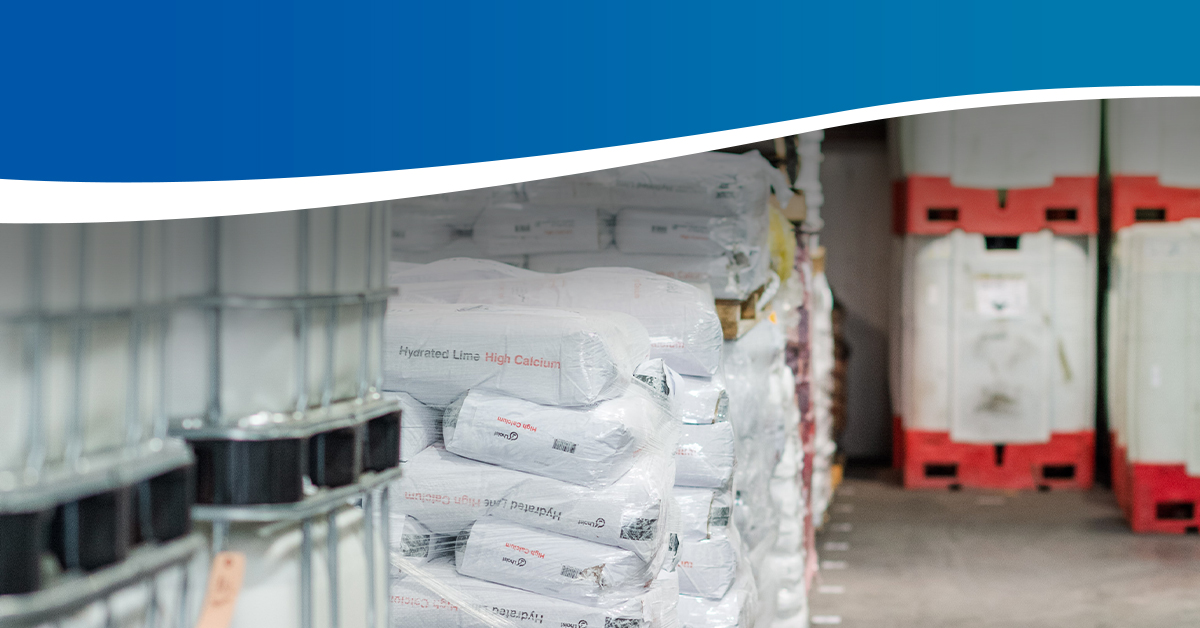Chemical Testing & Solution Development in Enigmatic Wastewater Process
As businesses operate and progress over time their treatment processes are bound to change. Unfortunately, some elements of treatment fail to evolve in step with these changes. A loss of insight across iterations can create costly problems, leading to unnecessary steps or chemical inclusions that no longer serve a beneficial function to the overall process. After being called in to conduct testing for a facility manufacturing concrete pavers, Operators Unlimited (OU) encountered one such treatment process with more than a few mysterious components.
Recent Concerns
Although the facility’s effluent rates were usually passable, they were far from optimal by the time OU arrived. In fact, the facility had been experiencing intermittent issues with high rates of total suspended solids (TSS). This led to foaming issues which were interfering with the facility’s ability to recycle their process water, in turn forcing the facility to consume and discharge a high volume of water. Puzzlingly, this facility integrated a costly dispersing agent in their process despite the waste stream’s high volume of inorganic residuals. Inorganic solids and residuals are generally known for their inability to form sound flocculation structures; an issue which would only be further exacerbated with a dispersing agent.
The Solution
Between the process idiosyncrasies and permitting exceedance, the facility reached out to OU, who started by collecting several samples onsite for further testing. The former chemical vendor was unable to explain their reasoning for several chemicals included in the process, prompting OU to take an investigative approach. After extensive laboratory analysis, OU’s chemical engineers determined that none of the chemicals in the facility’s current blend were well suited to its treatment process or waste stream composition. In response to their findings, OU’s engineers began formulating a new chemical regimen from the ground up.
Results & Cost-Reductions
 Over the course of a three-day initial trial, OU’s new customized blend of organic and inorganic chemistry reduced the facility’s 3-chemical process to a 2-chemical process. Eliminating the dispersing agent will save the facility between $100,000 and $150,000 annually on chemical costs alone. This change greatly reduced the facility’s chemistry load and associated costs resulting in improved solids capture rates and producing a higher-quality, more consistent effluent than the facility’s operators had seen in years. With their previous foaming problems solved, the facility can reuse previously unviable water and remains well within permit limits.
Over the course of a three-day initial trial, OU’s new customized blend of organic and inorganic chemistry reduced the facility’s 3-chemical process to a 2-chemical process. Eliminating the dispersing agent will save the facility between $100,000 and $150,000 annually on chemical costs alone. This change greatly reduced the facility’s chemistry load and associated costs resulting in improved solids capture rates and producing a higher-quality, more consistent effluent than the facility’s operators had seen in years. With their previous foaming problems solved, the facility can reuse previously unviable water and remains well within permit limits.
OU takes pride in providing our customer partners the ability to achieve predictable wastewater operational efficiency and maintain compliance with cost predictability. To increase your savings through chemical optimization, contact Operators Unlimited today.


